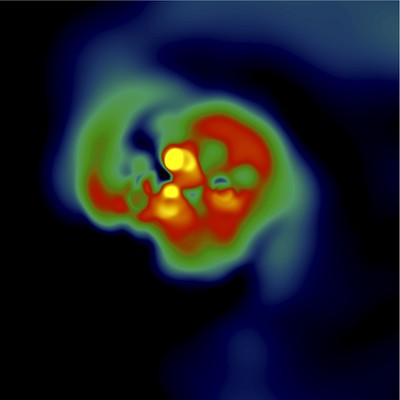Special delivery! See our visiting baby yaks (Dec. 20–Jan. 5) this holiday. Learn more
Science News
Spinstars
April 28, 2011

A study in Nature this week gives us possible picture of early stars. They were massive, lived fast and died young.
“We think that the first generations of massive stars were very fast rotators—that’s why we called them spinstars”, explains lead author Cristina Chiappini from the Leibniz-Institut für Astrophysik Potsdam.
Early stars were made of only hydrogen and helium and when they died-off in explosions, they contributed elements to future stars. While we can’t see these 13-plus billion old stars, their chemical imprints, like fingerprints, can still be found today in the oldest stars in our galaxy. These “fossil records” are the witnesses of the first stellar generations to pollute our Universe.
Chiappini and her team looked at one of these fossil records—NGC 6522—one of the oldest star clusters in the Milky Way. As expected, the chemical composition of the observed stars showed elements typical of massive stars. However, the new analysis also revealed elements, yttrium and strontium, usually produced by stars of smaller masses. Why?
According to New Scientist, in simulations the researchers ran to solve this question,
… similar chemical abundances were produced by massive stars whose surfaces spun at 500 kilometers per second, five times as fast as today's massive stars spin.
Fast rotation more thoroughly mixes material in a star's interior, boosting the rate of nuclear reactions that produce yttrium and strontium.
Hence spinstars.
“Alternative scenarios cannot yet be discarded - but we show that if the first generations of massive stars were spinstars, this would offer a very elegant explanation to this puzzle!” says Chiappini. Her team is already working on extending the stellar simulations in order to further test the proposed scenario.
Image credit: A. Stacy, University of Texas